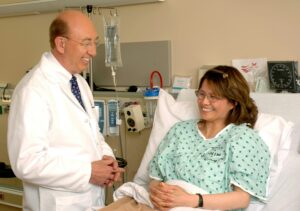Read time 5 minutes
A Moment of Gratitude
Every heartbeat feels like a gift now. After years of battling rare and chronic illnesses, I begin each morning with gratitude. It is to reflect on the strength I’ve regained and for the resilience I never knew I possessed. It’s a reminder that healing isn’t just physical; it’s emotional, spiritual, and deeply personal.

I often imagine what it would be like to visit a doctor just to share wellness updates, not symptoms.
How incredible would it be to celebrate our health with our healthcare providers, rather than only knocking on their doors when we’re unwell?
This blog isn’t merely a reflection on my health journey. It’s a heartfelt call to reimagine how healthcare works. It’s about shifting from a sickness-centered economy to a truly patient-centric ecosystem.
It would be great if doctors were rewarded not just for treating symptoms, but for fostering lifelong wellness.
The Hidden Flaws in Our Current Healthcare Economics

In many parts of the world, the economics of healthcare are rooted in a fee-for-service model. On paper, it sounds fair if doctors are compensated for each test, procedure, or consultation they provide. But beneath the surface, this model unintentionally incentivizes quantity over quality.
- More tests = more billing.
- More treatments = more revenue.
- Chronic illnesses = recurring income streams.
This system doesn’t always prioritize healing or prevention. It thrives when patients remain unwell. Which begs a painful question: Is our health economy really aligned with our well-being?
We’ve reached a critical junction. The conversation about value-based care, where outcomes, not volume, drive compensation, needs louder voices.
Needs urgency. Needs reform.
A Personal Journey Through the Maze of Misdiagnosis
My journey wasn’t just about symptoms. It was about survival.
In 2016, I was diagnosed with Isaacs’ Syndrome. It is a rare neuromuscular disorder characterized by continuous muscle fiber activity. As if that wasn’t overwhelming enough, I also tested positive for Lyme disease. It is a bacterial infection transmitted through ticks.
Over time, more conditions emerged:
- Glaucoma, slowly threatening my vision.
- Membranous Glomerulonephritis, impacting my kidneys.
- Digestive disorders like IBS, with relentless stomach acid imbalances.
- Frozen shoulder, eczema, diabetes, hypertension—the list grew endlessly.
Each diagnosis didn’t just add a new medical file; it redefined my reality.
Yet the most difficult part wasn’t just the illnesses, it was navigating a healthcare system that wasn’t built to handle them holistically.
Memories of ‘Vaidya’: A More Personal Era of Medicine

During one of my countless hospital visits, my father reminisced about our family’s neighborhood doctor, a gentle soul called a Vaidya.
He didn’t rely on extensive testing or hospital reports. His diagnosis was built on intuition, human connection, and deep wisdom. Herbal remedies and lifestyle advice were often the first line of defense.
This wasn’t “alternative” medicine; it was integrative care.
How did we stray so far from that intimacy? Where did the art of medicine vanish beneath the layers of bureaucracy?
Where Rare Disease Patients Stand Today

Having a rare disease doesn’t just mean unusual symptoms; it often means living in a limbo of uncertainty.
- I googled my symptoms endlessly, terrified by the results.
- Specialists were hard to find. General practitioners dismissed my concerns.
- Insurance models like FFS forced separate payments for every consultation, test, or procedure.
Worse, the siloed nature of specialty medicine meant that my doctors rarely communicated with each other. Each approached my case from their limited lens, without considering the full picture.
This fragmentation hurt, not just medically, but emotionally. I felt like a puzzle nobody wanted to solve.
And far too often, preventive care was never part of the plan. It’s heartbreaking to admit, but medications meant to treat one condition triggered others, like diabetes and blood pressure complications.
I wasn’t just a patient, I became a statistic in a system designed to manage, not heal.
The Ethics of Over-Treatment and Silent Suffering
I raise my voice not just for myself but for the millions silently enduring similar journeys. The system didn’t account for:
- Holistic evaluation. My physical and mental symptoms were always treated in isolation.
- Cost transparency. Many of my tests and treatments came with bills we couldn’t anticipate.
- Empowered decision-making. Rarely was I provided with options or explained long-term risks.
Most heartbreakingly, second opinions were discouraged. This wasn’t just flawed—it was unethical.
The Urgent Need for a Healthcare Paradigm Shift

Imagine a world where:
- Doctors are financially rewarded for keeping their patients well
- Preventive care is prioritized over reactive procedures
- Patients receive lifestyle guidance—not just prescriptions
- Technology plays a transformative role in personalized care
We need more of:
- Regular screenings
- Mental health support
- Nutrition coaching
- Community wellness programs
These investments prevent disease before it begins. They’re often far more cost-effective than treating complications later.
Let’s empower patients to ask questions and explore second opinions. Let’s encourage practitioners to embrace interdisciplinary collaboration.
Concierge Medicine: An Important Path Toward Value-Based Care

One model that resonates deeply with me is Concierge Medicine. It is a healthcare structure where patients pay a monthly or annual fee for a more personalized, accessible experience.
In return, doctors limit the number of patients they see, allowing for:
- Extended consultations
- Personalized attention
- Preventive care strategies
- Direct access via phone or email
This system reminded me of my days in investment banking. Back then, clients demanded transparency and outcomes, not just transactions. We moved from commission-based portfolio churning to performance-linked models.
Healthcare can do the same.
Imagine if a doctor’s compensation was linked not to how many procedures they perform, but to how healthy their patients stay.
Stories Shared, Voices United

Over the last 8 years, I’ve spoken to dozens of rare disease patients and their families. Their experiences echoed mine:
- Financial strain from constant treatments
- Frustration over misdiagnoses
- Desperation for holistic, empathetic care
When someone falls ill, the entire family suffers. Careers pause. Savings vanish. Dreams shrink.
And yet, this suffering could be lessened, with better systems and better awareness.
Building a Society Where Health Is Celebrated

This blog isn’t an attack on doctors.
Many healthcare professionals are doing incredible work despite being trapped in a flawed system. Instead, this is a plea to change how we reward and incentivize care.
If doctors were celebrated for preventing disease through education, lifestyle guidance, and early interventions, the entire ecosystem could transform.
Changing cultural habits takes time. But even small shifts toward value-based care could redefine the future of wellness.
We live in an era of remarkable technological and scientific progress. Let’s use it to foster transparency, healing and not just medical transactions.
DISCLAIMER
The views expressed in this article are the author’s own and do not represent any kind of medical advice.


